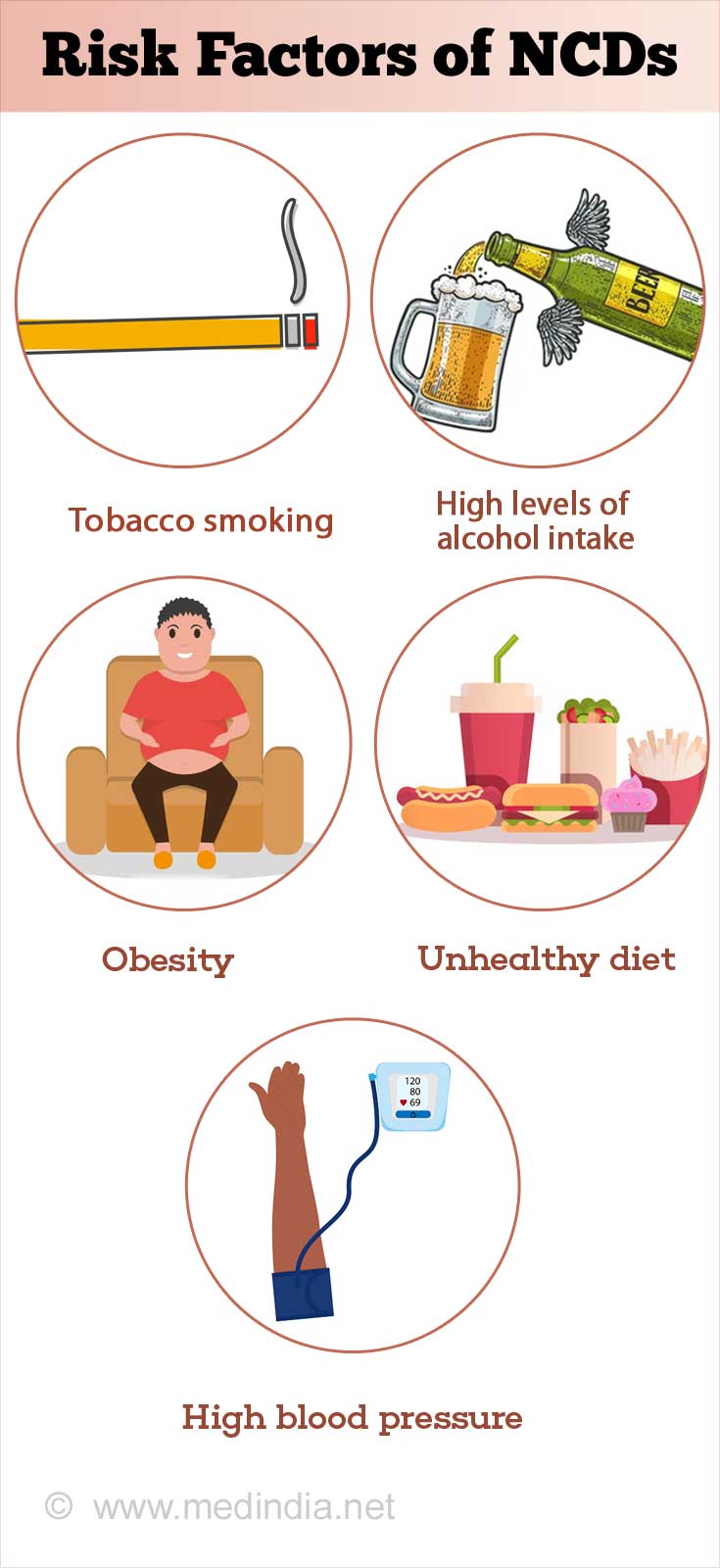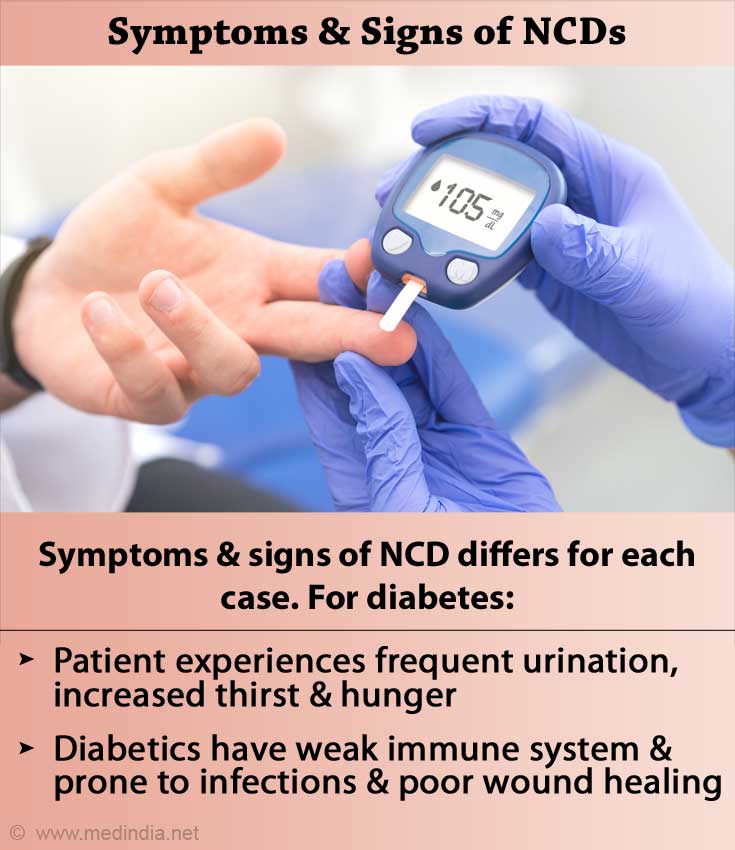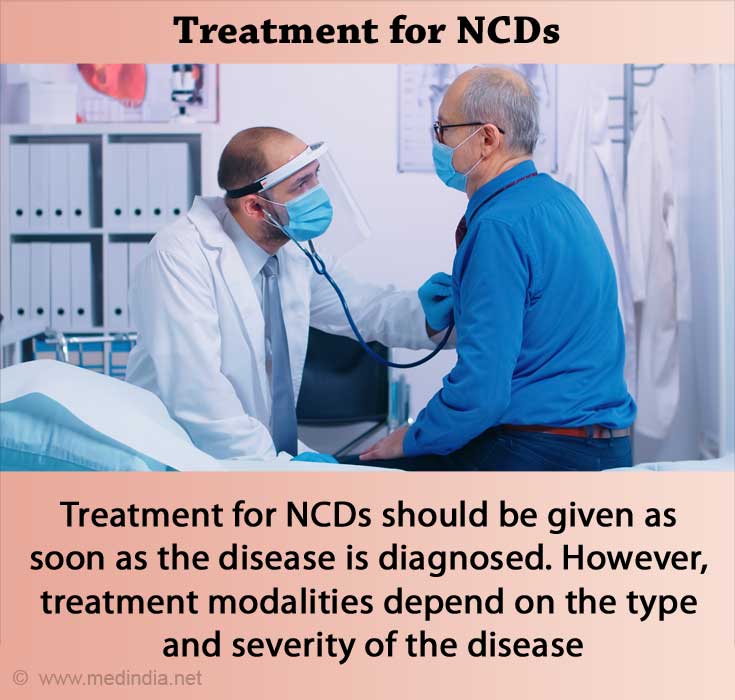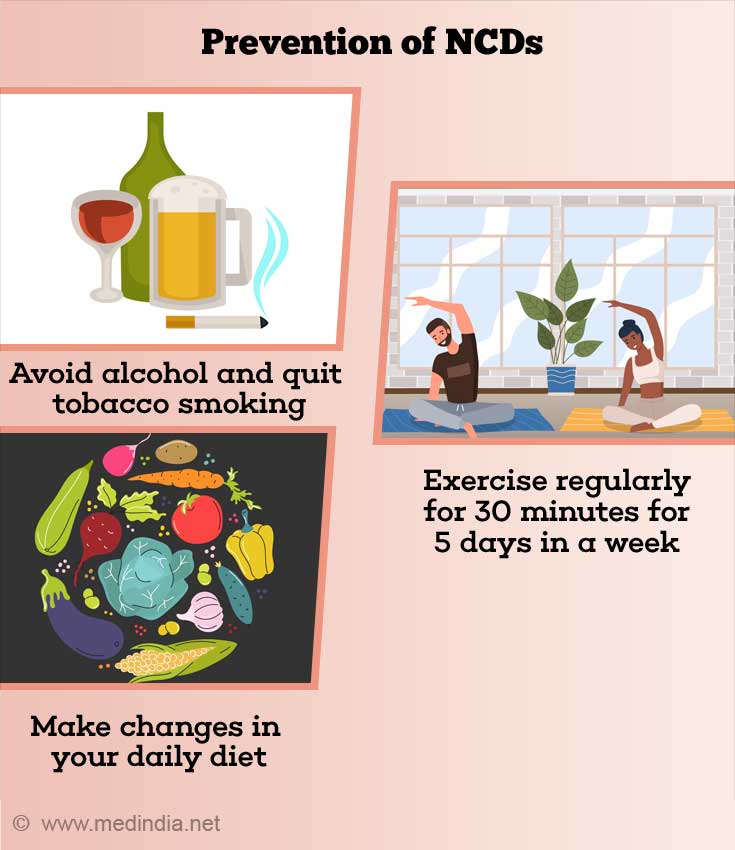- NCD Alliance - (https://ncdalliance.org/why-ncds/NCDs)
- Park's Textbook of Preventive and Social Medicine, 25th edition - (https://www.cdc.gov/globalhealth/healthprotection/ncd/global-ncd-overview.html)
- Noncommunicable diseases - (https://www.who.int/news-room/fact-sheets/detail/noncommunicable-diseases)
- About Global NCDs - (https://www.cdc.gov/globalhealth/healthprotection/ncd/global-ncd-overview.html)
What are Non-Communicable Diseases?
Non-Communicable Diseases (NCDs) are a group of chronic, non-infectious diseases which mainly include heart diseases, lung diseases, diabetes and cancer and many are preventable.
In the past it was considered to be the disease of the rich but now it is severely impacting people in low and middle-income countries and four out of five people with an NCD live in these countries.
Marty Natalegawa said - “The impact of NCDs is not only affecting the urban populations but also rural poor. This is compounding the basic problem of poverty.”
The death rates due to NCDs are notably higher than those due to infectious (communicable) diseases. It is estimated that 70% of all global deaths are due to non-communicable diseases.
Rising trends in the occurrence as well as related deaths due to NCDs thus pose a threat to the overall quality of life, thereby leading to a negative socio-economic impact worldwide.
These diseases are not communicable, in other words, they cannot be transmitted from person to person. However, there is a notable risk of developing NCDs as a part of genetic disorders or inherited diseases if there is a significant family history.
Though the elderly population (more than 70 years) is more susceptible to it, but the current trend shows that even a considerable fraction of the younger population succumbs to the condition. It has been reported that each year, 15 million people aged 30-69 die from a NCD.
What are the Types of Non-Communicable Diseases?
The main types of NCDs are:
- Cardiovascular Diseases: comprise of disorders of the heart and vessels, including hypertension, coronary artery diseases (heart attacks), congenital heart diseases, rheumatic heart diseases and stroke.
![Types of NCDs: Cardiovascular Disease Types of NCDs: Cardiovascular Disease]()
- Diabetes Mellitus: high blood sugar levels due to defective production or action of a hormone called insulin.
- Chronic Respiratory Diseases: includes chronic obstructive pulmonary diseases (like emphysema, chronic bronchitis), asthma, occupational lung diseases, pulmonary hypertension.
- Cancers: abnormal increase in the growth of cells leads to tumor formation. Some of the most commonly occurring cancers are those of lungs, breast, colon, rectum, prostate, mouth, stomach, liver, blood (leukemias), etc.
- Others:
- Chronic Mental and Neurological Disorders like
Alzheimer’s disease , Parkinson’s disease and - Chronic diseases of bone and muscles like Arthritis.
- Injuries with prolonged impairment of function.
- Environmental Diseases – arise due to long term exposure to toxic chemicals in the environment.
- Chronic Mental and Neurological Disorders like
What are the Causes and Risk Factors of Non-Communicable Diseases?
Unlike communicable diseases, the cause of NCDs cannot be narrowed down to a single causative agent. Multiple risk factors are responsible for predisposing an individual to develop these ailments.
The risk factors of developing NCDs can be broadly divided into two categories:
|
Modifiable or Risk factors that can be changed |
Non-modifiable or Risk factors that cannot be changed |
|
Tobacco use Harmful alcohol use Obesity Sedentary lifestyle Unhealthy diet High cholesterol (hyperlipidemia) High blood pressure (hypertension) High blood glucose (hyperglycemia) |
Age Gender Type A personality Genetic factors or Ethnicity Family history |
- Tobacco smoking (both active and passive) is a major risk factor that is common to most of the diseases in the NCD spectrum.
- High levels of alcohol intake on a daily basis (more than 75g per day) lead to harmful effects.
- Obesity has a major role to play in the development of NCDs. Rapid urbanization and sedentary lifestyles contribute to a significant deterioration in overall health, thereby making an individual more prone to NCDs.
- Unhealthy diet is considered a significant risk factor. Consumption of high amounts of salt and saturated fat, low intake of vegetables and fruits contribute to the burden.
- High blood pressure, high levels of triglycerides in blood, raised LDL and VLDL cholesterol increase the risk of atherosclerosis, thereby leading to complications of the heart and vascular system. On the contrary, HDL-cholesterol is protective and is thus known as the “good cholesterol”.
- Type A personality describes people who are restless, impatient and highly competitive. These individuals have higher chances of developing NCDs as compared to the calmer and more philosophical group of people (Type B personality).
- First degree relatives of people living with NCDs, as well as genetically predisposed individuals are more susceptible.

What are the Symptoms and Signs of Non-Communicable Diseases?
The symptoms and signs are specific to the diseases:
- Cardiovascular Diseases:
- Coronary Artery Diseases (Heart attacks) - present with constricting pain or discomfort in the chest that may radiate to left arm, shoulder, jaw or back.
- Stroke - Numbness or sudden weakness of face or extremities, fainting.
- Rheumatic heart disease - fever, joint pain or swelling, painless lumps under skin, jerky movements, rashes, fainting and heart murmurs due to involvement of valves of the heart.
- Diabetes: Patient experiences increased frequency of urination, increased thirst, increased hunger. Diabetes also weakens the immune system, thereby making the person prone to infections and poor wound healing. Later, other organs like eyes, kidneys, nervous system, etc. also gets affected.
- Chronic Respiratory Diseases: Symptoms exhibited are long-term dry cough, noisy breathing, shortness of breath, inability to exercise, fast breathing.
- Cancer: In general, cancer patients experience rapid weight loss, reduced appetite, weakness. Moreover, cancers of specific organs show symptoms accordingly, like changes in bowel and bladder habits, lumps under skin, breathing difficulties and cough, unexplained bleeding, difficulty in swallowing, etc.

How do you Diagnose Non-Communicable Diseases?
Early detection is the key to reduce the burden of complications and improve life expectancy in NCD.
When symptoms consistent with these chronic diseases are seen in a high-risk individual, various screening and diagnostic measures are performed:
- Cardiac imaging modalities like Electrocardiography (ECG), Echocardiography, Angiography.
- To diagnose respiratory diseases, Chest X-ray, CT scan, Spirometry can be used.
- Blood tests to determine glucose and lipid levels in blood.
- Cancers can be detected by performing blood tests, urine tests, imaging (CT scan, MRI, Bone scan, PET scan, X-ray, USG) and biopsies.

How can you Treat Non-Communicable Diseases?
Lifestyle modification should be practiced wherever possible and required. It should include daily exercise, cutting out junk food, optimizing weight, reducing stress through meditation and breathing exercise and getting adequate sleep.
Treatment for NCDs should be sought as soon as disease is diagnosed. Treatment modalities depend on the type and severity of the disease.
- Antihypertensive medicines, blood thinners (anticoagulants), statins are given for cardiovascular ailments. In severe cases, surgical procedures like CABG (coronary artery bypass grafting) or stenting procedures may be required. Antibiotics are required if the cause is rheumatic.
- Blood glucose lowering pills and insulin injections are given to diabetics.
- For respiratory disorders, medicated inhalers, pills and injections containing steroids, bronchodilators or anti-inflammatory medicines are prescribed.
- Cancer patients may undergo chemotherapy, radiotherapy, or surgical procedures to remove tumor.

How to Prevent Non-Communicable Diseases?
Prevention plays an important role in the battle to combat NCDs.
- Tobacco Cessation: Complete cessation of tobacco use improves outcomes to a great extent.
- Harmful levels of alcohol intake should be cut down.
- Dietary Modifications:
- Saturated fat and cholesterol intake should be reduced.
- Salt intake should be less than 5gm per day.
- Consumption of dietary fibers should be increased.
- Following DASH diet plan: DASH stands for Dietary Approaches to Stop Hypertension. It is a heart-friendly diet plan, which recommends consumption of vegetables, fruits, nuts, low-fat dairy products, fish, beans; and advices against intake of fatty meals, sweetened sugary beverages, full-fat dairy products.
- Limitation of high glycemic index food in diet.
- Physical Activity: Regular aerobic exercises for at least 30 minutes for 5 days a week is recommended. Weight reduction is recommended so as to achieve a healthy BMI (Body Mass Index) of 18.5 - 24.99.
- Behavioral Changes: Reducing stress and anxiety by practicing meditation and Yoga could benefit overall health.
- Occupational exposure to toxic chemicals and radiation exposure should be checked. Air pollution is to be minimized at a personal level.

 MEDINDIA
MEDINDIA


 Email
Email






